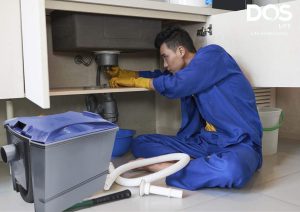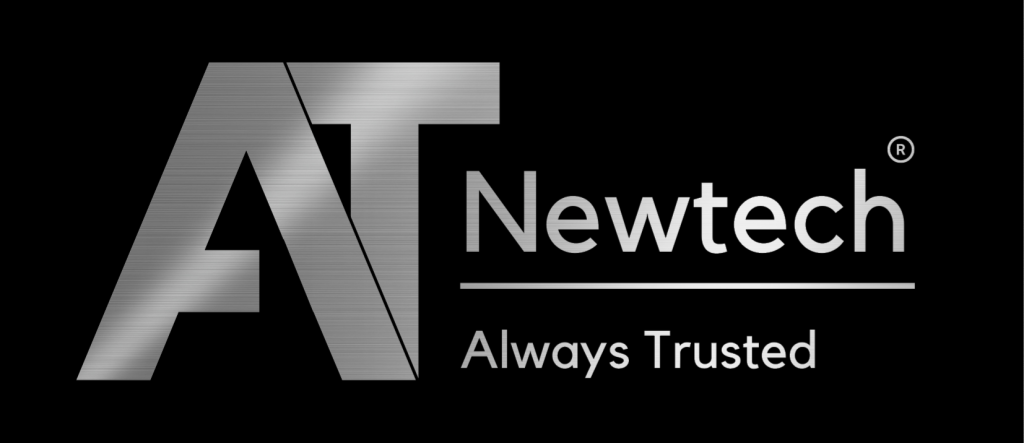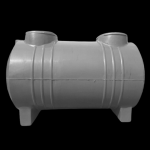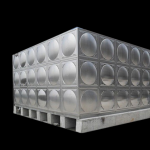Guide to Maintaining and Cleaning Grease Traps to Extend Their Lifespan
Do You Own a Grease Trap but Don’t Know How to Maintain and Clean It Properly?
Or are you considering whether cleaning a grease trap is easy enough before deciding to buy one? This article provides a detailed guide on maintaining and cleaning grease traps, grease filters, and grease tanks to ensure optimal performance and extend the device’s lifespan. Contact Ecoprotec now for detailed consultation!
1. Why Is It Important to Maintain and Clean Grease Traps?
Grease traps, grease tanks, or grease interceptors are essential devices that separate grease and solid waste from wastewater, protecting the drainage system. However, regular maintenance and cleaning are crucial to ensure the device operates efficiently and lasts longer.
-
Ensure Effective Grease Separation: Regular removal of accumulated grease and waste prevents clogs in the drainage system, ensuring smooth operation.
-
Extend Device Lifespan: Regular cleaning prevents damage to grease trap components caused by long-term waste buildup.
-
Protect the Environment: Prevent grease and waste from spilling out and causing pollution to the surrounding environment.
2. Grease Trap Cleaning Schedule
The frequency of grease trap cleaning depends on its capacity and usage level:
-
Households: Clean every 1-2 weeks.
-
Small Cafes and Restaurants: Clean 2-3 times per week.
-
Large Restaurants and Hotels: Clean daily or every other day to ensure optimal performance.
3. Step-by-Step Guide to Cleaning a Grease Trap
3.1. Preparation Before Cleaning
-
Wear Protective Gloves: Avoid direct contact with grease and waste.
-
Prepare Necessary Tools: A bucket, cleaning brush, specialized cleaning solution, and trash bags.
3.2. Cleaning Procedure
Turn Off the Drainage System: Prevent water from flowing into the grease trap during cleaning for easier handling.
Open the Grease Trap Lid: Carefully remove the lid to avoid spilling grease or waste. Place the lid in a clean area.
Type of grease and waste:
-
-
Use a Bucket or Dustpan: Scoop out grease and solid waste from the compartments of the grease trap for efficient removal.
-
Place Grease in Specialized Trash Bags: Properly dispose of grease in dedicated waste bags to prevent environmental pollution.
-
Clean the Interior:
-
Use a Specialized Cleaning Brush and Solution: Clean the grease trap compartments thoroughly to remove grease and residue buildup.
-
Ensure Complete Removal of Grease: Make sure to eliminate all grease residue from the surfaces and hard-to-reach corners of the grease trap.
Rinse with Clean Water:
-
Thoroughly rinse the grease trap with clean water
-
Make sure to remove any remaining cleaning solution and debris.
Inspect and Clean Other Components:
-
Check the Rubber Gasket on the grease trap lid to ensure it is not damaged or worn out
-
Thoroughly clean the grease trap lid and check all joints for any signs of leakage. Repair or tighten connections as needed.
Put the lid back on:
-
Ensure the lid is tightly sealed to prevent unpleasant odors from escaping.
Function check:
-
Test the grease trap to ensure it is operating properly after cleaning and maintenance.
4. Guide to Regular Maintenance of Grease Traps

4.1. Maintenance Scheduling
Set a maintenance schedule based on the frequency of use to ensure optimal performance.
-
-
Households: Perform maintenance once a month.
-
Small Restaurants: Perform maintenance every 2 weeks.
-
Restaurants and Hotels: Perform maintenance weekly or as needed based on actual usage.
-
4.2. Maintenance Tasks to Be Performed
Inspect the Filter Compartments:
Regularly check the condition of the filter compartments to ensure they are free of damage and functioning efficiently.
Inspect the Connecting Pipes:
Verify that there are no leaks at the connections between the grease trap and the drainage system. Tighten or repair as needed
Replace Rubber Gaskets if Necessary:
Inspect the rubber gaskets and replace them if they show signs of wear or damage to maintain a proper seal.
Check the lid:
Ensure the Lid Is Not Warped or Rusted:
Lubricate the Joints:
Apply a dedicated lubricant to maintain the tightness and extend the lifespan of the joints.
4.3. Benefits of Regular Maintenance
-
Prevent Issues: Identify and address potential problems early to avoid major malfunctions or damage.
-
Extend Lifespan: Maintain performance and prolong the service life of the grease trap.
-
Save Costs: Reduce repair and replacement expenses.
5. Important Notes When Using Grease Traps
-
Avoid Pouring Hot Water Directly: Hot water can melt grease, leading to blockages in the system.
-
Avoid Using Harsh Chemicals: Strong chemicals can damage the materials of the grease trap.
-
Regularly Inspect Rubber Gaskets: Ensure the rubber gaskets are always sealed tightly to prevent odors from escaping.
6. Why Choose Ecoprotec Grease Traps?
-
High-Quality Products: Ensure superior grease filtration efficiency.
-
Maintenance Support: Provide detailed guidance on cleaning and maintenance.
-
Dedicated Service: Free consultation, installation support, and long-term warranty.
-
Diverse Product Range: Grease tanks, sink grease traps, and grease separators tailored to all needs.
Let Ecoprotec take care of all your concerns about grease and waste!
With high-quality grease trap products, protecting your drainage system and the environment has never been easier.
Special Offer: Contact us today for a free consultation and exciting promotional deals!
Hotline: 0368172226 / 0834473166 Website: atnewtech.vn
Act Now: Choose the grease trap that fits your needs and enjoy the convenience today!

 Composite Tank
Composite Tank Water tank cover.
Water tank cover. Kitchen equipment
Kitchen equipment Industrial water tank
Industrial water tank


